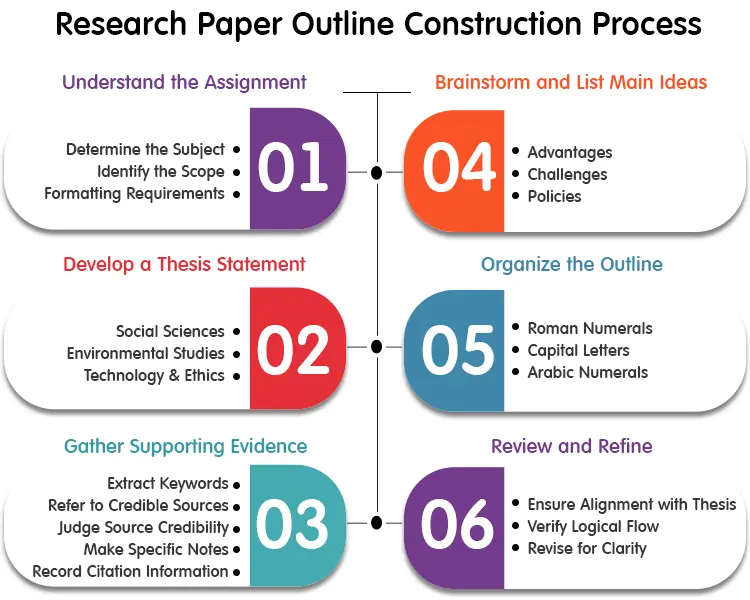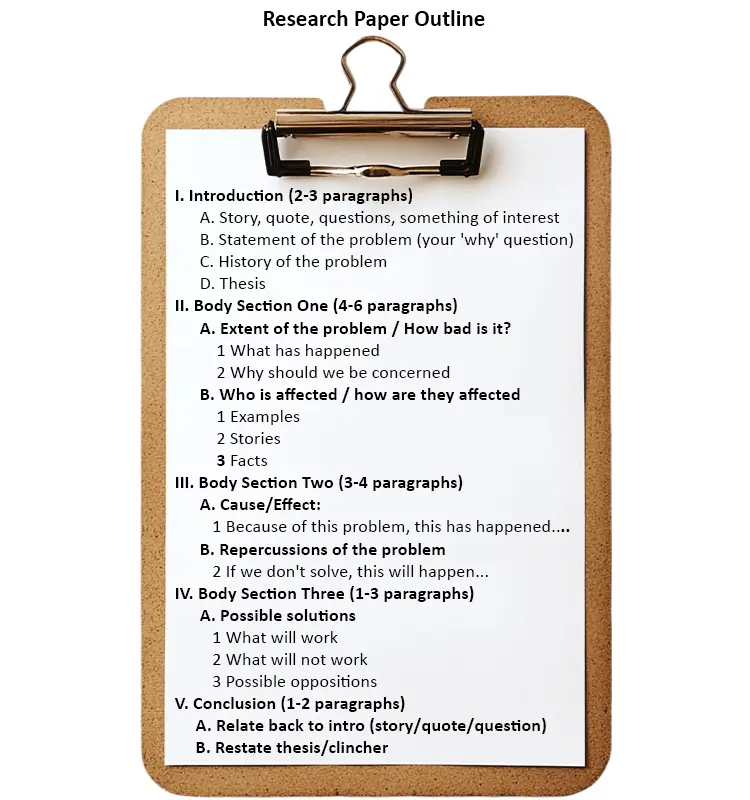What is a Good Way to Start a Research Report? (2025 Guide)
Struggling to start your research report? Learn how to craft a strong introduction with examples, templates, and USA-specific tips. Download our free ...
Academic and professional development depends on research papers. They are essential in the field of education as well as personal development and promotion of knowledge in any sphere, with their clarity and logical flow. They foster critical skills, contribute to the growth of knowledge, and uphold the integrity and advancement of every scholarly field. However, a systematic guide on how to write a research paper outline that forms all the significant topics, subsidiary topics, and details you intend to incorporate in your research paper in the order you wish them to fall. Mainly, it aims to guide you to organize your ideas in a logical way so that the flow of information can be seen further, and the writing process becomes more efficient and better organized. Before you start writing the research paper, the outline works as a roadmap or a guiding light that enlightens you about the thesis, main points, and evidence before writing.
A research paper outline is used to arrange the major parts of a research paper. It traditionally starts with significant headings of such sections as the introduction, literature review, methodology, results, discussion, and conclusion that are subdivided, in turn, into minor subheadings reporting particular points or arguments. The instructions for how to write an outline for a research paper are mainly designed to make the ideas orderly, following a regulated flow of arguments. The outline that defines the flow of the paper helps writers detect the existing gaps in the research, foresee possible counterarguments, and make their thesis statement more accurate.
Research outlines exist in numerous types with various organizational and stylistic purposes. The following are the main types that are commonly used in academic writing:
| Outline Type | Structure/Format | Description & Best Use |
| Alphanumeric | Roman numerals (I, II), capital letters (A, B), Arabic numerals (1, 2), lowercase letters (a, b) | The most widely used format. Organizes ideas hierarchically with short notes or phrases. Ideal for academic papers and essays. |
| Full-Sentence | Same as alphanumeric, but each point is a complete sentence | Provides more detail and clarity. Useful for complex topics or when you need to flesh out arguments before drafting. |
| Decimal | Numbers and decimals (1, 1.1, 1.1.1) | Uses a numerical system for each level. Great for technical or highly structured documents. |
| Topic Outline | Short phrases or keywords | Quick and informal, helpful for brainstorming and organizing broad ideas. |
| Sentence Outline | Complete sentences at every level | Ensures logical flow and depth. Helpful for detailed planning, speeches, or complex research. |
| Working Outline | Flexible, evolving structure | Used during drafting; can be changed as ideas develop. Suitable for long projects. |
| Reverse Outline | Created after drafting | Helps revise and improve structure by outlining a completed draft. |
Constructing a Research Paper Outline is definitely a work that helps to finish the process of writing quickly without facing any challenges. The steps that must be followed for how to write a research paper outline guide are given below:
In order to figure out the assignment, you are required to break the prompt down carefully to obtain the basic necessities of the prompt.
The thesis statement represents the basic argument or the claim of your research paper, which usually comes at the end of your introduction. It is not a statement of fact; it is a given, specific, arguable point that your whole paper will serve to establish and argue. A clear thesis will be like a guiding light to what you are going to research and write about. It must be definite, specific, and debatable, as some person might reasonably disagree with it, but you will have to offer arguments that prove why it is mistaken.
Consider some examples of thesis statements for a clear understanding:
Brainstorming main ideas for an outline on how to write a research paper is basically deconstructing your thesis statement into the central argument or parts of the paper that will be used to prove your thesis. Try to have 3-5 specific yet related points which will be the basis of your paper. These are going to be your main points that will turn out to be your key sections or chapters in the outline.
An outline on how to write a research paper includes gathering evidence to support it, and it plays a crucial part as well:
The best way to have a well-organized research paper is by structuring the guide on how to write an outline a hierarchical basis.
This segmentation makes your work structured logically, and the writing presents a visual picture of how you organize your paper.
After constructing your outline for a research paper, a thorough review and refinement process is essential to ensure its effectiveness as a blueprint.
Under the design of the research paper, having an outline that a certain paper is going to follow helps in bringing clarity, organization, and observing a certain standard that has been laid down in the academic world. The commonest presentations are a research paper outline, APA, and MLA, whose structural demands are different:
The format of the APA (American Psychological Association) outline for a research paper is popular in the social sciences, education, and psychology. It lays stress on an organized and empirical study process.
The outline format supported by MLA (Modern Language Association) is usually applied to humanities studies in general, including literature, language, and cultural studies. When you write an outline for a research paper this format is essential. It is more flexible than APA and is concentrated on developing arguments and analysis of text.
The knowledge of these formats will make sure that your research paper outline and the final paper that you will write will fulfill the specifications of the department in which you are working.

A properly constructed structure of a research paper automatically facilitates the logical flow since it flows downwards toward the particular. It begins with the introduction, then proceeds to contextual literature review, specifies methodology and results, and is followed by interpretation. This development makes one section flow into the next and gives the reader an organized argument that makes careful and precise sense.

A well-developed research paper relies on the development of a good outline. These are ten vital points that can make yours successful:
While writing an outline for the research paper, there are certain mistakes you make that must be avoided:
There are some sources that can be of great help when creating an outline of a research paper:
Drawing an adequate research paper outline is a significant procedure that supports the success of the whole writing work. When you carefully collect evidence to support your statements, efficiently structure your points, and thoroughly proofread your text to ensure that the points are consistent and understandable, you design a great outline of your arguments. By following acceptable standards such as APA or MLA, you can be sure that your work holds academic merit, and by simply avoiding certain pitfalls, such as a lack of specifics in headings or support, you will be reinforcing it. Conclusively, the time spent on a thorough outline will save a lot of the hard work during the write-up stage, will add a better flow to your research, and will end up with a better and compelling paper in the final stage.
An outline helps you think of a logical structure for a research paper. It will have an introduction, which will include your thesis and a literature review explaining the research that has already been done. Then there is the methodology, or how you did the study, followed by your results/ findings, and then a discussion of the interpretation of your results. It ends with a conclusion by summarizing and usually posing subsequent research. This is in the form of Roman numerals, with sub-points and, therefore, with a clear flow.
Outlining is essential since it helps to organize your ideas in a way that has a logical development and a clear argument in your paper. It serves as a guide that does not allow you to go off-topic and enables you to spend the right amount of time on each section, thereby conserving time in the process of writing.
There are seven major steps that are usually followed when it comes to writing a research paper:
The simplest outline form uses a hierarchy structure to cluster information. It generally starts with Roman numerals (I, II, III) and main topics. Capital letters (A, B, C) are used next to indicate sub-points under each Roman numeral. Any further diving down then uses Arabic numerals (1, 2, 3), and in case of further subdivision, lowercase letters (a, b, c), respectively. It is an easy flow that gives you a picture of how your content goes.
Subscribe now!
To our newsletter for latest and best offers